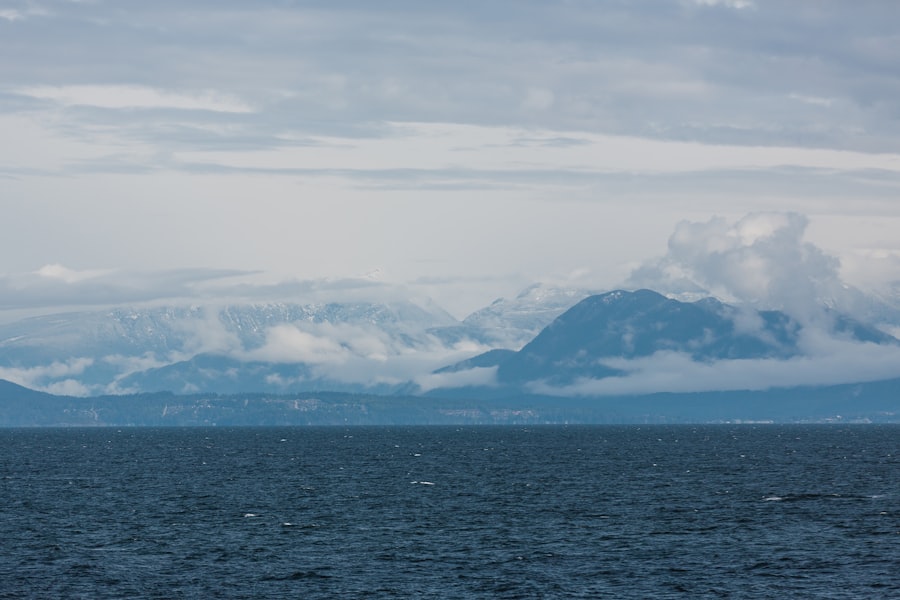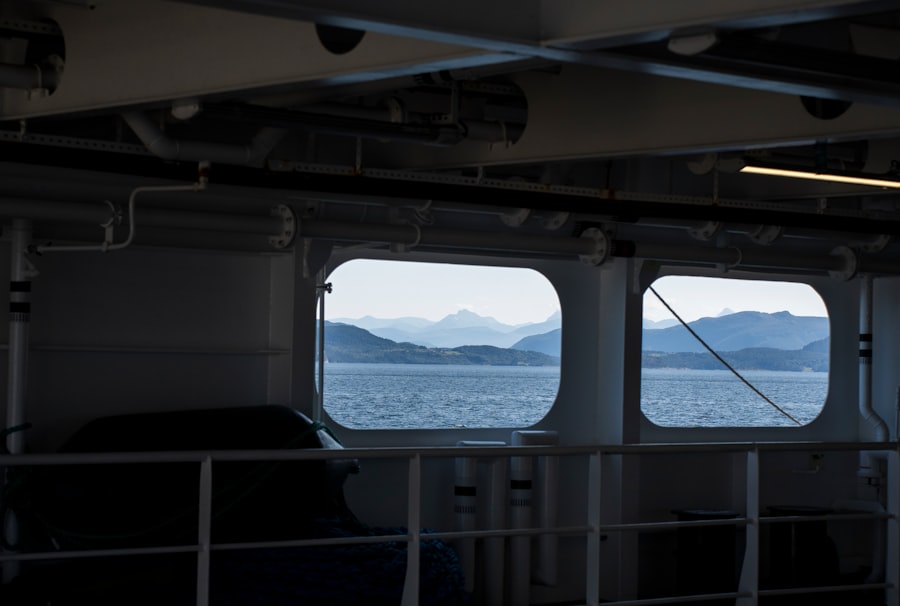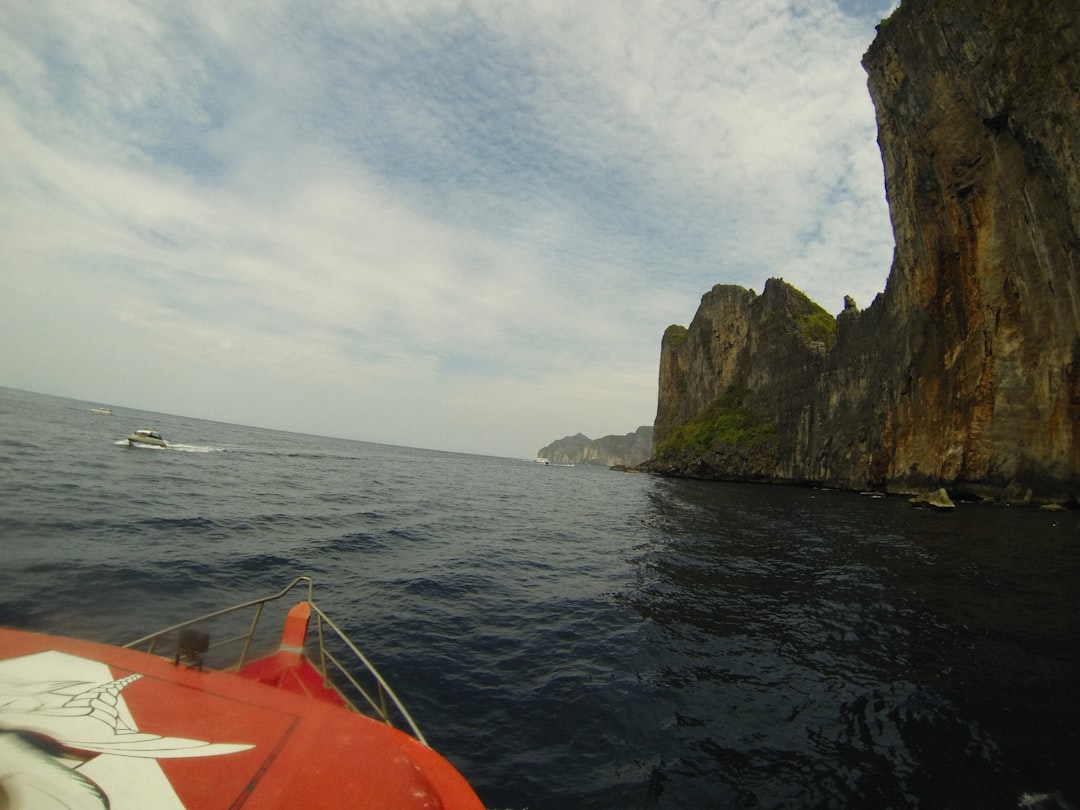The Drake Passage, a body of water that separates South America from Antarctica, is renowned for its tumultuous seas and unpredictable weather. Named after the English explorer Sir Francis Drake, who navigated these waters in the late 16th century, the passage has become a significant route for adventurers and researchers alike. Stretching approximately 600 miles, it serves as a gateway to the Antarctic region, drawing travelers eager to experience the unique landscapes and wildlife that lie beyond.
The passage is not only a geographical marvel but also a testament to the power of nature, often challenging even the most seasoned sailors. Navigating the Drake Passage is an adventure in itself, as it is known for its rough waters and strong currents. The convergence of the Atlantic and Pacific Oceans creates a dynamic environment that can shift from calm to chaotic in a matter of hours.
For many, crossing the Drake Passage is a rite of passage, a thrilling prelude to the wonders of Antarctica. However, it is essential for travelers to understand what lies ahead, as the conditions can vary dramatically, impacting both the journey and the experience of reaching the icy continent.
Key Takeaways
- The Drake Passage is a body of water between the southern tip of South America and the South Shetland Islands of Antarctica, known for its challenging weather and sea conditions.
- Weather in the Drake Passage can be unpredictable, with strong winds and rough seas, making it important to be prepared for potential motion sickness and pack appropriate clothing.
- The passage offers incredible wildlife spotting opportunities, including sightings of whales, seals, and various seabird species, making it a popular destination for nature enthusiasts.
- The best months for smooth crossings through the Drake Passage are during the Antarctic summer, from November to March, when sea conditions are generally calmer.
- Peak tourist season in the Drake Passage is during the summer months, with higher prices and more crowded conditions, while off-peak travel offers benefits such as lower prices and fewer tourists.
Weather and Sea Conditions
The weather in the Drake Passage is notoriously unpredictable, characterized by rapidly changing conditions that can challenge even the most experienced mariners. Winds can whip up to gale force, creating towering waves that can reach heights of 30 feet or more. This volatility is primarily due to the lack of landmass to break up the winds, allowing them to sweep across the open ocean unimpeded.
As a result, travelers should be prepared for anything from calm seas to tumultuous storms during their crossing. Temperature fluctuations are also common in this region. While summer months may bring milder conditions, temperatures can still dip significantly, especially during early morning or late evening hours.
The combination of cold air and ocean currents can lead to fog and rain, further complicating navigation and visibility. Understanding these weather patterns is crucial for anyone planning a journey through the Drake Passage, as they can greatly influence not only the comfort of the voyage but also safety considerations.
Wildlife Spotting Opportunities

One of the most compelling reasons to traverse the Drake Passage is the opportunity to witness an array of wildlife that thrives in this unique ecosystem. The waters are teeming with life, from playful dolphins and majestic whales to a variety of seabirds that soar above the waves. Travelers often find themselves captivated by the sight of humpback whales breaching or orcas gliding gracefully through the water.
The passage serves as a migratory route for many species, making it an ideal location for wildlife enthusiasts. In addition to marine mammals, the Drake Passage is home to numerous seabird species, including albatrosses and petrels. These birds are often seen riding the wind currents above the ship, providing an exhilarating spectacle for passengers.
Birdwatchers will find themselves in paradise as they spot these magnificent creatures in their natural habitat. The chance to observe such diverse wildlife adds an enriching layer to the journey, making it not just a crossing but an unforgettable experience.
Best Months for Smooth Crossings
| Month | Number of Crossings | Average Smoothness Rating |
|---|---|---|
| January | 120 | 4.5 |
| April | 150 | 4.8 |
| July | 180 | 4.9 |
| October | 160 | 4.7 |
When planning a trip through the Drake Passage, timing can significantly impact the experience. Generally, the best months for smoother crossings are during the austral summer, which spans from November to March. During this period, weather conditions tend to be more favorable, with calmer seas and milder temperatures.
Travelers embarking on their journey during these months often report more pleasant experiences, allowing them to fully enjoy the breathtaking scenery and wildlife encounters. However, even within this peak season, conditions can still vary widely from day to day. It is essential for travelers to remain flexible and prepared for potential changes in weather patterns.
While summer offers better chances for smooth sailing, it is wise to keep in mind that nature can be unpredictable. Those who embark on this adventure should be ready for anything, embracing both the challenges and rewards that come with crossing one of the world’s most famous waterways.
Peak Tourist Season
The peak tourist season in the Drake Passage coincides with the austral summer months when travelers flock to Antarctica for its stunning landscapes and unique wildlife. This period typically runs from late December through early February, attracting adventurers from around the globe eager to explore this remote region. During these months, cruise ships and expedition vessels are at their fullest capacity, offering a range of itineraries that cater to various interests.
While peak season provides ample opportunities for exploration and wildlife sightings, it also means that travelers may encounter larger crowds on board their vessels and at popular landing sites on the Antarctic Peninsula. For some, this bustling atmosphere adds to the excitement of the journey; however, others may prefer a more tranquil experience away from the throngs of tourists. Understanding these dynamics can help travelers make informed decisions about when to embark on their Antarctic adventure.
Off-Peak Travel Benefits

Traveling during off-peak times can offer several advantages for those looking to cross the Drake Passage without the hustle and bustle of peak tourist season. The months just before or after peak season—late November and March—can provide a more intimate experience with fewer travelers on board. This allows for greater opportunities to connect with fellow adventurers and crew members while enjoying a more personalized journey.
Additionally, off-peak travel often comes with cost benefits. Many tour operators offer discounted rates during these less popular months, making it an attractive option for budget-conscious travelers. Furthermore, wildlife sightings can still be plentiful during these times, as many species remain active outside of peak season.
For those willing to embrace a slightly different experience, off-peak travel can yield rich rewards in terms of both savings and unique encounters.
Special Considerations for Winter Crossings
Winter crossings through the Drake Passage present a unique set of challenges and considerations for travelers daring enough to embark on such an adventure. While winter offers its own breathtaking beauty—think pristine ice formations and serene landscapes—it also brings harsher weather conditions that can lead to rough seas and extreme cold temperatures. Travelers must be well-prepared with appropriate gear and clothing designed for frigid conditions.
Moreover, winter crossings may limit wildlife sightings compared to summer months when animals are more active and visible.
However, those who venture into this icy realm may find themselves rewarded with stunning vistas devoid of crowds and an unparalleled sense of solitude amidst nature’s grandeur.
Spring and Fall Crossings
Spring and fall crossings through the Drake Passage offer travelers a unique perspective on this remarkable region as it transitions between seasons. In spring (September to November), adventurers may witness the awakening of wildlife as animals return from migration and begin their breeding rituals. This time of year brings vibrant colors as flora begins to bloom and ice starts to melt, creating picturesque landscapes that are both captivating and serene.
Conversely, fall (March to May) presents its own charm as temperatures begin to drop and wildlife prepares for winter migration. Travelers during this time may have opportunities to see animals in their natural habitats as they gather food or prepare for colder months ahead. Both spring and fall crossings provide a chance for those seeking a quieter experience while still enjoying remarkable scenery and potential wildlife encounters.
Summer Crossings
Summer crossings through the Drake Passage are undoubtedly popular among travelers seeking adventure in Antarctica’s stunning landscapes. With milder temperatures and calmer seas, summer offers an ideal environment for exploration and wildlife spotting. The long daylight hours allow for extended excursions on land and at sea, providing ample opportunities for photography and immersion in nature’s beauty.
During summer months, travelers can expect vibrant wildlife activity as many species are nesting or feeding in preparation for migration. Humpback whales breach alongside vessels while penguins waddle along icy shores—these moments create lasting memories for those fortunate enough to witness them firsthand.
Choosing the Right Tour Operator
Selecting an appropriate tour operator is crucial when planning a journey through the Drake Passage and onto Antarctica itself. With numerous companies offering various itineraries and experiences, travelers should conduct thorough research before making their choice. Factors such as group size, vessel type, onboard amenities, and environmental practices should all be considered when evaluating potential operators.
Additionally, it is essential to look for operators with strong safety records and knowledgeable guides who can enhance the overall experience through their expertise in wildlife observation and environmental conservation. Reading reviews from previous travelers can provide valuable insights into what one might expect during their journey. Ultimately, choosing the right tour operator can significantly impact not only comfort but also safety and enjoyment throughout this remarkable adventure.
Conclusion and Final Tips
Crossing the Drake Passage is an extraordinary adventure that offers travelers a unique glimpse into one of Earth’s most remote regions. From unpredictable weather conditions to breathtaking wildlife encounters, each journey through this iconic waterway presents its own set of challenges and rewards. By understanding seasonal variations, selecting appropriate travel times, and choosing reputable tour operators, adventurers can maximize their experiences while navigating these storied waters.
As travelers prepare for their journey across the Drake Passage, they should remain flexible and open-minded about what lies ahead. Embracing both the unpredictability of nature and the thrill of exploration will undoubtedly lead to unforgettable memories that last a lifetime. Whether one chooses to travel during peak season or off-peak times, each crossing holds its own magic waiting to be discovered amidst the waves of this remarkable passageway into Antarctica’s heart.
If you’re planning a journey across the Drake Passage, timing can be crucial to ensure a smoother experience. The best months to cross this notorious stretch of water are typically during the Southern Hemisphere’s summer, from November to March, when the weather is relatively milder and the seas are calmer. For more detailed insights on planning your adventure, you might find this related article on MyGeoQuest helpful. It provides valuable tips and considerations for making the most of your voyage across this legendary passage.
WATCH HERE: Drake Passage: Earth’s Deadliest Waters Revealed
FAQs
What is the best month to cross the Drake Passage?
The best months to cross the Drake Passage are typically from November to March, during the austral summer. This is when the weather is relatively milder and the sea conditions are more favorable for crossing.
Why is the austral summer the best time to cross the Drake Passage?
During the austral summer, the weather in the Drake Passage is generally less severe, with calmer seas and milder temperatures. This makes for a more comfortable and safer crossing.
What are the sea conditions like in the Drake Passage during the best months?
During the best months to cross the Drake Passage, the sea conditions are generally calmer compared to other times of the year. However, it is important to note that the Drake Passage is known for its unpredictable and potentially rough seas, so it is still advisable to be prepared for some degree of motion.
Are there any wildlife sightings during the best months to cross the Drake Passage?
Yes, the austral summer is a great time for wildlife sightings in the Drake Passage. This includes the opportunity to see various species of seabirds, whales, and other marine life as you cross the passage.
What are the typical temperatures during the best months to cross the Drake Passage?
During the best months to cross the Drake Passage, temperatures can range from around 0°C to 10°C (32°F to 50°F). It is important to pack appropriate clothing for these cooler temperatures, including layers and waterproof gear.
